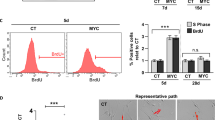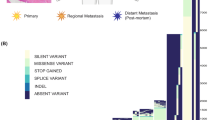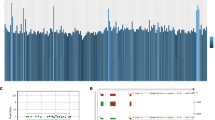Abstract
The expression of the gp100 antigen is generally thought to be confined to cells of the melanocytic lineage, which makes the protein a suitable melanoma-specific marker. Strikingly, after screening a panel of normal tissues, tumour samples and cell lines of non-melanocytic origin, we found transcripts encoding gp100 in virtually every tissue and cell line tested. In contrast, tyrosinase and MART-1/MelanA transcripts were detected only in cells of the melanocytic lineage. However, no gp100 protein could be detected by either Western blotting or cytotoxicity assays. Therefore, at the protein level, gp100 remains exclusive for cells of melanocytic origin despite its transcription in many cell types. The major implication of this finding is that screening of patient material for gp100 expression should preferrably be performed by antibody staining. Reverse transcriptase polymerase chain reaction (RT-PCR) can be employed, provided that it is performed in a tightly controlled, semiquantitative setting.
This is a preview of subscription content, access via your institution
Access options
Subscribe to this journal
Receive 24 print issues and online access
$259.00 per year
only $10.79 per issue
Buy this article
- Purchase on Springer Link
- Instant access to full article PDF
Prices may be subject to local taxes which are calculated during checkout
Similar content being viewed by others
Author information
Authors and Affiliations
Rights and permissions
About this article
Cite this article
Brouwenstijn, N., Slager, E., Bakker, A. et al. Transcription of the gene encoding melanoma-associated antigen gp100 in tissues and cell lines other than those of the melanocytic lineage. Br J Cancer 76, 1562–1566 (1997). https://doi.org/10.1038/bjc.1997.597
Issue Date:
DOI: https://doi.org/10.1038/bjc.1997.597
This article is cited by
-
Successful treatment of metastatic melanoma by adoptive transfer of blood-derived polyclonal tumor-specific CD4+ and CD8+ T cells in combination with low-dose interferon-alpha
Cancer Immunology, Immunotherapy (2011)
-
Susceptibility of malignant plasma cells to HA-1H specific lysis suggests a role for the minor histocompatibility antigen HA-1 in the graft-versus-myeloma effect
Leukemia (2004)
-
Tissue distribution and differential expression of melanocortin 1 receptor, a malignant melanoma marker
British Journal of Cancer (2002)
-
Melanoma-inhibiting activity (MIA) mRNA is not exclusively transcribed in melanoma cells: low levels of MIA mRNA are present in various cell types and in peripheral blood
British Journal of Cancer (1999)



